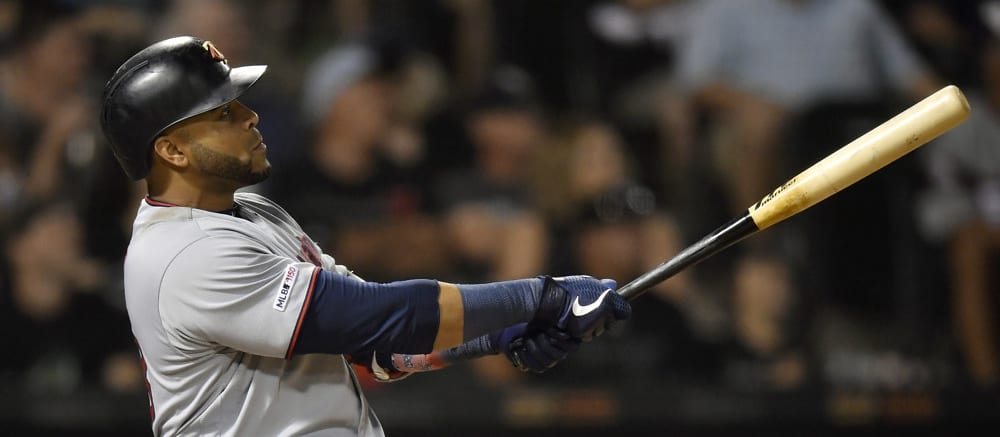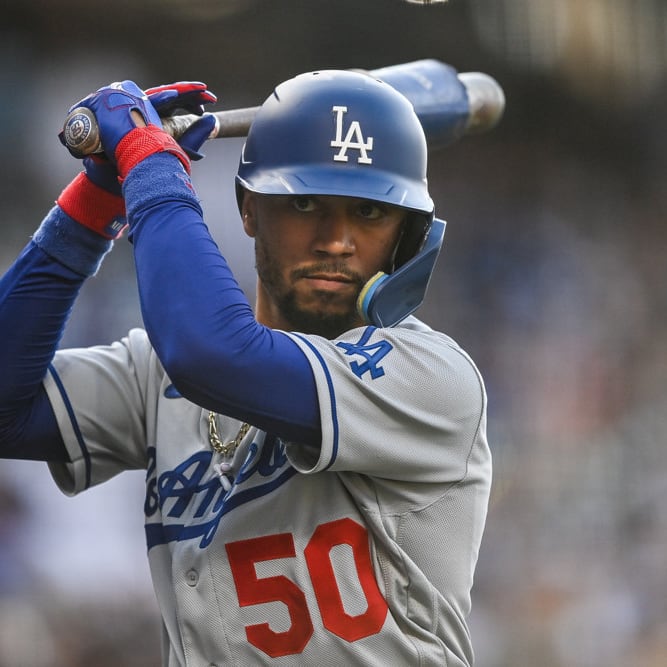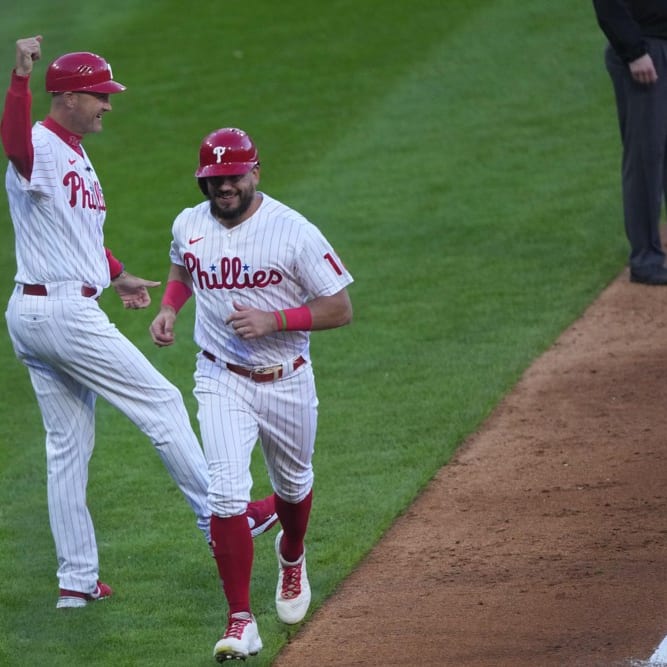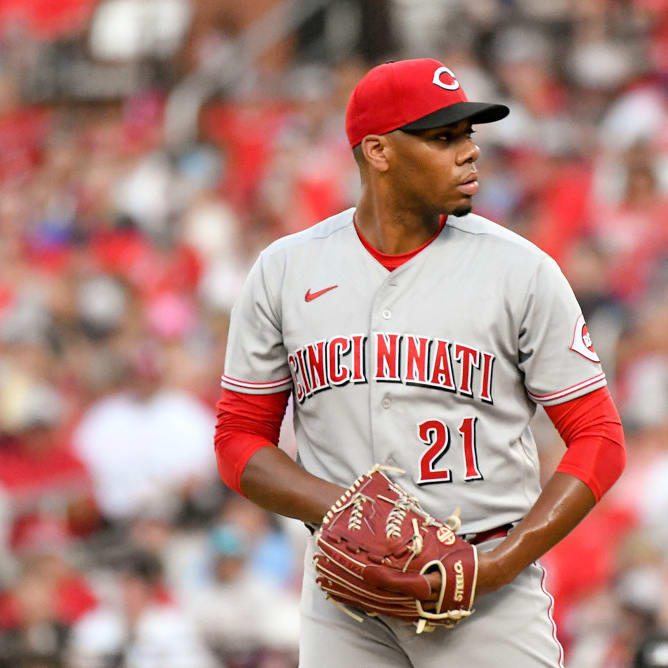This article is part of our The Z Files series.
It's time to turn the page on 2019 and begin thinking about 2020. There are already several sets of initial rankings for next season floating around cyberspace. These are all subjective in nature, and there's nothing wrong with that. Personally, I prefer a more objective foundation, involving a statistical projection converted into expected earnings, though both entities are fraught with error. Still, I know this going in and am more comfortable massaging rankings based on my formulaic expectations.
In brief, the manner I generate a player projection is to convert their stats to a neutral environment, apply a weighted average over the last three seasons, regress the appropriate stats to flesh out luck, return the numbers to the player's park context and adjust for playing time.
The first step in the process is determining the 2019 park factors. I use the method described in The Bill James Handbook published by Baseball Info Solutions, with my own twist. A park index of 110 means the venue increases production of that stat by 10 percent. Let's say that's the right-handed home run index for a particular venue. A player projected to hit 20 homers in a neutral environment would be projected for 21 after applying the park factor. The conventional method assumes the away venues average out to neutral, so half the home venue is used to adjust the neutral projection since the player plays half his games at home.
20 x 1.05 = 21
I utilize composite factors. If a team plays
It's time to turn the page on 2019 and begin thinking about 2020. There are already several sets of initial rankings for next season floating around cyberspace. These are all subjective in nature, and there's nothing wrong with that. Personally, I prefer a more objective foundation, involving a statistical projection converted into expected earnings, though both entities are fraught with error. Still, I know this going in and am more comfortable massaging rankings based on my formulaic expectations.
In brief, the manner I generate a player projection is to convert their stats to a neutral environment, apply a weighted average over the last three seasons, regress the appropriate stats to flesh out luck, return the numbers to the player's park context and adjust for playing time.
The first step in the process is determining the 2019 park factors. I use the method described in The Bill James Handbook published by Baseball Info Solutions, with my own twist. A park index of 110 means the venue increases production of that stat by 10 percent. Let's say that's the right-handed home run index for a particular venue. A player projected to hit 20 homers in a neutral environment would be projected for 21 after applying the park factor. The conventional method assumes the away venues average out to neutral, so half the home venue is used to adjust the neutral projection since the player plays half his games at home.
20 x 1.05 = 21
I utilize composite factors. If a team plays the full slate of 162 games, the composite factor is a weighted average of all 162 venues. Obviously, half are the home park, but the other half use the index of each away venue, counted as many times as the teams played there. The composite index usually doesn't differ by much, but it satisfies my OCD yearning, even though I realize the inherent shortcomings of a projection in general.
For a comprehensive description of park factors, check out a piece I wrote in April 2017, The Necessary Evil of Park Factors. Here is the Cliff Notes version:
A pitfall with park factors is that they fall short of removing all bias. Even 81 games isn't enough of a sample to completely eliminate uncontrollable factors like weather. This is one reason a three-year average is generally deployed, increasing the sample to minimize the variance.
The algorithm is designed to minimize the influence of the team by comparing hitting and pitching results home and away. That is, a hitter-friendly park shouldn't be the result of a strong offense or weak staff, while a pitcher-friendly venue won't be due to a solid rotation or punchless lineup.
That said, there could be team-dependent influences on the park index. It isn't necessarily quality, but the factor could be affected by extreme team characteristics. As a hyperbolic example, Fenway Park is known to suppress power for left-handed batters. Down the line in right field may be extremely short, but it juts out sharply, resulting in the deepest right field in the league. Let's say the Boston Red Sox have a lineup of lefty swingers adept at ringing line drives off Pesky's Pole. Those same batted balls would likely curve foul away from Fenway. However, they become home runs at home, artificially increasing the home run factor for left-handed batters. This factor would be applied to hitters not as adept at hitting the ball down the line, leading to a bloated homer projection. This is obviously an extreme example, but there could be more subtle team traits tempering a specific index to that team composition, in turn unfairly influencing the expectation of a player not possessing those traits.
Keep in mind a venue favorable for homers isn't necessarily advantageous for runs, while a power-suppressing venue can be a boon for runs if it means more balls finding outfield grass. With more runs scoring via the long ball than ever, though, the disparity between such parks could be lessened. Further, park factors do not apply to all players in a linear fashion, and when the data is distilled to a single player, the noise surrounding the outcomes could easily mask any tangible influence exerted to the player. Finally, though they aren't considered as much as indices for homers and runs, strikeouts and walks are influenced by the venue with factors such as the batter's eye, climate, elevation and foul territory all contributing.
With that as a backdrop, here are some observations pertaining to 2019 park factors.
1. The Arizona humidor appears to be working
We now have two years of data for Chase Field with baseballs stored in a humidor. Last season, the runs index dropped to 106 (it was usually greater than 110 pre-humidor). This year it fell even further to 98. Predictably, the impetus was a decline in the home run index from 94 to 88. This raises the question, "Could using a humidor in all parks help combat the juiced ball?" Unfortunately, no. The humidor is effective in the desert because the combination of elevation and dry heat increases the coefficient of restitution (bounciness) of the ball. Storing balls in the humidor keeps the moisture at a normal level. In fact, at least on paper, storing balls in a humidor in a climate like Texas could mean the balls have less moisture, thus could travel even farther.
2. The Yankees and Twins crushed it despite power-suppressing venues
Honestly, this is a head-scratcher, though there are likely some explanations. The Yankees and Twins both shattered the single-season record for team homers, yet Yankee Stadium played to a 92 index while Target Field checked in at 86. This is the second straight season Target Field suppressed power according to park factor, after boosting it for many seasons. What's odd about this is the batter's eye was changed, in theory to help hitters. The drop in the Bronx is befuddling, as the venue has long increased power from both sides of the plate. Left-handed numbers are easy to justify with the short porch in right. The high index for righty swingers can be attributed to the team characteristics discussed earlier, as the Yankees are stocked with righty power hitters not only adept at going the other way, but their opposite field power is greater than to the pull side. The prime examples are Aaron Judge and Giancarlo Stanton. The fact that Judge missed a significant amount of time while Stanton was essentially out for the season could explain the drop in the right-handed index, as the remaining righty batters weren't so prone to going oppo, while the left field fence is markedly deeper than right field. It's only one player, but Didi Gregorius is a dead pull hitter, not unlike the hypothetical hitters described in the Fenway Park example earlier. Gregorius missing substantial time may have affected the left-handed index. Keep in mind this isn't about the quality of the players, but their tendencies.
3. Marlins Park boosted runs
Marlins Park or, as I like to call it, The Aquarium, has always been one of the best pitching venues in the league. Not only does it squash power, it reduced runs as well. For some reason, The Aquarium played 109 for runs this season. One reason could be while it still suppressed homers, Marlins Park was five percent more homer-friendly than before and as mentioned, a greater percentage of runs are tallied via the long ball than ever. Even so, it's too early to decree Marlins Park poor for pitchers and when using a three-year average, the runs index will fall below 100.
4. Minute Maid Park increased runs
It's no secret Marlins Park is considered a pitcher's haven. However, Minute Maid Park has stealthily been a pitching venue for years, and it's not due to Justin Verlander, Gerrit Cole, etc., at least not completely. Oddly, Minute Maid Park also played 109 for runs after being the American League's best park for pitching the past several seasons. Like The Aquarium, Minute Maid Park incurred an increase in home run index, a rather significant bump from 107 to 123. Perhaps the higher runs factor dovetailed with the homer factor as I suggested might happen, with fewer runs scoring without the benefit of a big fly.
This rolls into a general thought requiring more investigation. Studies show home run rate correlates well with average fly ball distance. The reduced drag on the 2019 baseball resulted in an average fly ball distance increase of six feet. This is not going to affect power equally in all parks. Some have dimensions where the added distance wouldn't matter, the ball was gone anyway. The extra six feet may not be enough to clear other venues. Meanwhile, there will be parks where the increased fly ball distance will spur a disproportionate number of home runs. It very well could be Minute Maid Park falls into this class.
5. Globe Life Park versus Globe Life Field
Was there a less ceremonial closing of a venue than Globe Life Park? Obviously there isn't a great deal of history, but still. Anyway, Arlington continued to be one of the best places to score runs, though the home run factor dropped seven points. There are several factors contributing to how the old venue played, including climate, wind and dimensions. Early reports suggest the new venue will play more pitcher-friendly, though it remains to be seen how that fleshes out. Not to mention, Globe Life Field will play differently with the roof opened and closed, and we have no idea how often it will be one way or the other. Will they only close the roof when it's raining, or will it be closed in response to excessively oppressive heat? My more than ample gut says it has to be more pitcher friendly, boding well for Mike Minor, Lance Lynn, Kolby Allard and the rest of the Rangers rotation. On the other hand, temper expectations for batters.










